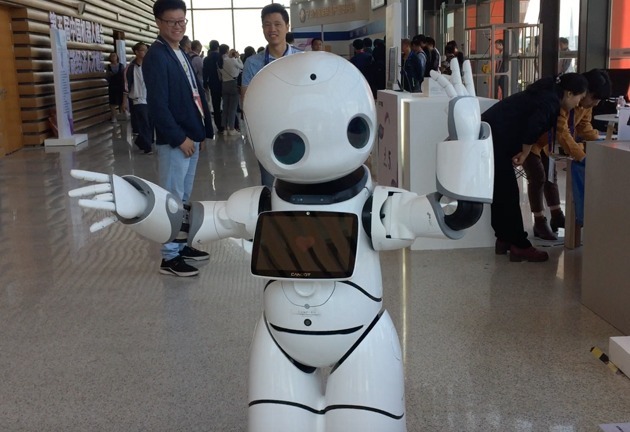
Photo/NBD
May 14 (NBD) -- A number of home-made high-end six-axis robots were exhibited at the 5th China Robot and Intelligent Economic Talents Summit, which was held in Zhejiang province's Yuyao last week.
The development focus of China's robot industry is currently undergoing a shift from quantity to quality. It is predicted new materials will be widely applied in the area of robots, especially service robots. Meanwhile, cloud service technologies will be employed to dramatically improve robotic applications, and the adoption of artificial intelligence will enrich application scenarios of robots, said Luo Junjie, deputy director of the industrial equipment department at the Ministry of Industry and Information Technology.
Data shows that the global robot market reached 23.2 billion U.S. dollars as of 2017, showing an average annual growth rate of 17 percent from 2012 to 2017, while China's robotics market expanded to 6.28 billion U.S. dollars at the end of last year with an average annual growth rate of up to 28 percent in the 2012-2017 period.
According to a research report on the development of China's robot industry, China has registered more than 6,500 robot-related companies and opened over 60 robotic industrial parks till the end of 2017.
However, after a period of blind and disorder development, investors and entrepreneurs were returning to rationality. This change could be seen from last year's drop in the growth rate of the number of newly registered robot-related companies.
Companies without core technologies will be soon drown in the wave of competition, Yao Lijun, Chairman of Konfoong Materials International Co., Ltd, warned at the summit.
To reduce the heavy reliance on foreign robot parts, Chinese manufacturers like Zhejiang Jinggong Science & Technology Co., Ltd. have sped up the independent development of key components and have achieved great headways.
However, the industry still has a long way to go as most home-made robots couldn't meet market demand at present, said Zhu Shiqiang, president of the Zhejiang University Robotics Institute.
Current robots are more like automated machines, the primary version or 1.0 version of robots. Real robots should be a perfect mix of machine, artificial intelligence, information technologies, and internet technologies, and come with advanced features like self-perception, self-learning and decision-making capability, Luo Jun, executive chairman of the International Robotics and Intelligent Equipment Industry Alliance, told NBD. That will be the improved 2.0 version, Luo added.
With the rapid development of big data, cloud computing, artificial intelligence, and other advanced technologies, the silhouette of the robot 2.0 era is getting clear. How to overcome technical challenges and make inroads into the medium/high-end sector has become a key issue to the industry development.
Email: lansuying@nbd.com.cn


 川公网安备 51019002001991号
川公网安备 51019002001991号





